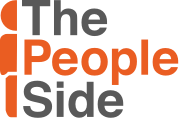Polarity Thinking: How Crumbl Cookie Inspires Better Decision Making
In today's dynamic business environment, leaders can encounter problems that are seemingly impossible to solve. The situations they find themselves in are often dynamic, nuanced, and complex. When faced with these types of challenges, we recommend that leaders stop trying to solve the problem and start trying to manage the tension.
This is where Polarity Thinking comes into play—a powerful framework that helps leaders manage interdependent, but seemingly opposite, forces. Unlike traditional problem-solving, which forces people to choose between two options, Polarity Thinking encourages leaders to leverage the strengths of both sides to achieve sustainable success.
Take for example the success story of Crumbl Cookie. This franchised bakery business began in Utah with only one flavor – a seemingly perfect chocolate chip cookie. Eventually the owners wanted to expand their menu offerings and practice more creativity, but they still wanted to offer their crowd-pleasers on a regular basis. Instead of choosing either a fixed menu OR a rotating menu, they found a “Both/And” solution — keep the most popular flavors consistent (the chocolate chip cookie and their chilled pink sugar cookie are on a “semi-permanent menu”) AND they offer a rotating menu of four new cookies each week. This rotating menu + semi-permanent menu solution invites their fanbase to revisit the store on a regular basis while also providing the comfort of having their favorite cookie available whenever they want.
Polarity Thinking encourages us to examine how two things can be true at the same time. This shifts the options available from being on a switch (“this or that”) to dials (“a little bit of this, and a little bit of that”). One’s perspective changes from trying to find more value in one option versus the other, as if they were mutually exclusive, to seeking the complementary value of both options in order to achieve long term goals.
The Benefits of Polarity Thinking
Adopting Polarity Thinking offers numerous benefits for leaders and organizations:
Enhanced Decision-Making and Problem-Solving: By considering multiple perspectives and integrating diverse viewpoints, leaders can make more informed, balanced decisions and encourage creative solutions. This approach leads to more effective problem-solving by leveraging the strengths of various perspectives.
Greater Organizational Resilience and Innovation: Balancing opposing values helps organizations adapt to changing environments while maintaining core strengths. Embracing both stability and change fosters a culture of continuous improvement and growth, enhancing the organization's ability to innovate and thrive.
Balanced Leadership and Enhanced Collaboration: Leaders who manage polarities effectively can create a more cohesive and adaptable team. By recognizing and valuing different perspectives, they promote better teamwork and collaboration, leading to a more harmonious and productive work environment.
Another Real-Life Example: Managing Tensions at The People Side
In the leadership development industry, companies are often trying to decide if they should offer customized learning solutions or sell pre-packaged learning solutions. Customized solutions tend to be more effective, while “ready-to-run” solutions tend to be cheaper and easier for your client to buy. This is a tension we manage at The People Side as well. But since we teach polarity thinking, we decided to practice it on ourselves!
STEP 1: Stop Calling it a Problem
To open up the dialog, we needed to believe that this was not a problem for us to solve, it was a tension for us to manage. We did not need to choose one approach over the other. Rather, we needed to understand how to create the right mix of both and then adjust as needed.
STEP 2: Surface the Tensions
We acknowledged that there were diverse perspectives within our team. We engaged in an open dialogue and created a safe space for sharing our different viewpoints to identify the most important considerations from both perspectives. Any tension we had became a source of creativity and innovation! Through it we identified both the benefits and risks of the polarities we were examining (Customized Solutions vs Ready-to-Run Solutions), and realized we all cared about creating effective learning solutions that clients could buy at an affordable price. To help in this process, we identified some important questions to consider:
"What are the positive aspects of each perspective?"
“What are the downsides?”
"What happens if we focus too much on this side and neglect the other?"
"What are the long-term benefits of maintaining a balance?"
"What could go wrong if we favor one perspective over the other?"
STEP 3: Find the Best Blend
What this process revealed was that we should create some standard offerings for our most popular programs, while always offering the option for customization. As our first experiment, we designed a development program for Team Leaders called “Leading People” that is a ready-to-run solution. If a client wants a more customized version of Leading People, we offer them an hourly rate for designing new content or modifying the existing content to their specific needs. This blended approach allows us to tailor our offerings while maintaining competitiveness in our business strategy and pricing.
Leading with Polarity Thinking
Polarity Thinking offers leaders a new mental dial and encourages more dynamic adjustments depending on the context. By adopting Polarity Thinking, leaders can create an environment where values are not seen as being in competition with each other, but as a source for creative thinking and breakthrough ideas. By thoughtfully balancing these interdependent elements, you can create a dynamic, resilient organization that not only withstands the challenges of today's fast-paced world, but it thrives in it. Our team of coaches are here to help you turn the dials and lead with a more adaptive and dynamic leadership style. To learn how, let’s start a conversation.


